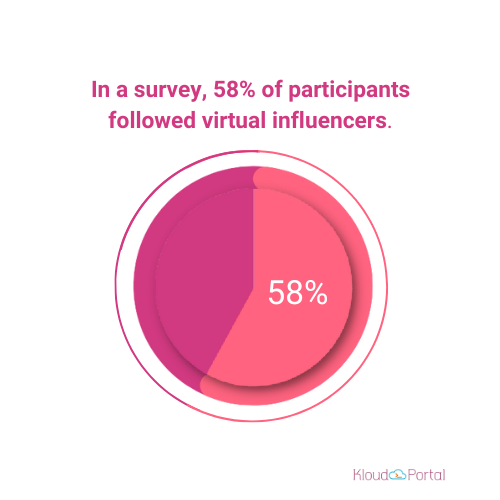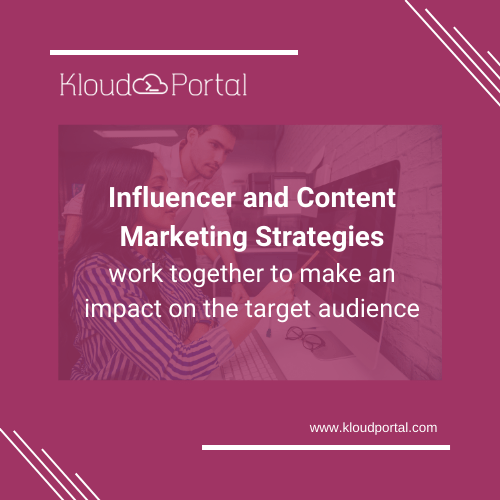
Virtual Influencers Who Are They & How Do They Work
While many of us use social media for a breather or colonial ties, others use it for promotional causes to reach a global audience. Indeed, at some point, we all might have been influenced by posts on social media platforms such as Twitter, Facebook, and Instagram. Isn’t it? Let us brace for the next phase, the era of virtual influencers. The virtual influencer is a piece of fiction, yet it will be the next major technological advance in the future years.
Who is a Virtual influencer?
A virtual influencer is a kind of computer-generated imagery (CGI). To put it simply, they are digitally created characters that are aimed to be human-like in appearance, traits, and reactions. They can sway public perception through social media posts, blogs, and tweets. In fact, behind each virtual influencer, there will be a creative team working for brands or individuals with fair technical advances. They have complete control over their style and reactions and keep updated on online communities to fit the inclinations of their targeted audience.
When did Virtual influencers begin to sway?
Today while virtual influencers may appear to be a new trend, did you know they’ve actually been around for quite some time? In reality, Virtual influencers appear to be developed from the concept of virtual idols, which was first developed in the 1980s Japanese animations. Since then, different virtual influencers have developed as entertainers, vocalists, and hosts, as well as in commercial marketing, and the era has begun.
Who among them has the most public recognition?
After the age began, several virtual influencers gained notoriety and were able to sway audiences. Check out the process of development.
First here is Ludo Magalu. If you’ve heard of virtual influencers, you’ve probably heard about Ludo Magalu, the world’s top virtual influencer from Brazil with the most social media followers. Ludo Magalu is a virtual influencer created to promote and market Magalu, Brazil’s largest retail brand. Later she started by promoting iBlogTV on behalf of Magazine Luiza and afterward started sharing product reviews, unboxing videos, and software tips on her social media account from the year 2009.
With over 3 million followers, the next most popular influencer is Lil Miquela, a well-known American virtual influencer who endorses streetwear and luxury brands such as Prada, Calvin Klein, Nike, and Samsung. When she made her debut during Milan Design Week in 2018, she puzzled the audience as to whether she was a real personality or a virtual one. She quickly took over the fashion house’s social media profile.

- Imma is a renowned influencer who works with popular brands such as Puma, IKEA, KFC, Porsche, Magnum, Nike, Dior, Calvin Klein, Valentino, Lenovo, Amazon, Lenovo… and she has also made an appearance at the Tokyo 2020 Paralympic Games closing ceremony.
- Noonoouri, a virtual influencer from Germany, has not only taken the fashion business by storm by collaborating with the majority of top luxury fashion labels, like Versace, Lacoste, and Bulgari. She educates her audiences on various social problems in addition to fashion.
- Shudu Gram is a well-known South African virtual Instagram influencer who is generally recognized as the World’s First Digital Supermodel and even walked the first red carpet at the 2019 BAFTA film awards. She has been associated with brands such as Balmain, Cosmopolitan, Samsung, Vogue, The Dubai Mall, Chanel, Bulgari, and WWD.
- Maya Gram, a virtual influencer, has been appointed as a Puma brand ambassador for influencer marketing.
- To promote the new season of Upload, Amazon worked with four different virtual influencers: Aliza Rex, Binxie, FNMeka, and Ruby 9100M.
- The World Health Organization collaborated with Knox Frost, a 21-year-old AI, to raise COVID awareness.
- KFC has released a CGI model of Colonel Sanders to meet the next generation of marketing products and services.
How do Virtual influencers work?
According to a survey report, 58 percent of people among the surveyors followed at least one virtual influencer. This explains how quickly these virtual Influencer trends are taking traction. Just like real influencers, virtual influencers can also influence the audience’s mind. Today, everyone is keen on the latest trends and brands to follow to keep ahead of the pack. Virtual influencers with an AI-controlled system can help to create a new trend and influence people by catching the pulse of the audience curve easily. Moreover, it can reach out to an entire audience in one stretch. In contrast to real influencers, virtual influencers provide companies with an innovative and fresh approach to communicating with their audience. Moreover, companies can have full control over virtual influencers, as they are extremely versatile and can cut down marketing costs. Not only are purchasing impulses virtual influencers, but they can also cause social responses and behavioral change. Virtual influencer marketing may be an alternate choice for firms looking to add a distinctive twist to their marketing strategy other than the digital marketing flywheel. Because virtual influencers have few practical limitations and with an alluring continuous relationship, virtual influencers can be one of the smartest prospects to connect with audiences. However, before you pick a virtual influencer for your brand, remember to assess your target audience and design the perfect influencer- a personality as rich and relevant to your market. Of course, there is no one-tier model for successful marketing, but practically every firm may benefit from engaging virtual influencers with proper execution. So, Let’s see how a virtual influencer leads in the coming years.
Shaminaa
About The Author…
Shamina Banu is originally from the beautiful city of Vizag. She has a Master’s degree in Agricultural processing and food engineering and brief teaching experience. Her love of writing drove her to pursue a career as a content writer. She is a critical thinker who creates well-researched, accurate, and ingenious content for audience engagement. She considers content creation and clear communication an art form and constantly strives to improve her skill.









 Every member in the team turns the wheel effectively, to give enough momentum to our marketing efforts. An SEO expert extensively works on Search Engine Optimization techniques which are both On-page and Off-Page. Keeping in tune with the Google’s search engine optimization updates, Bing and Yahoo search engine updates, understanding the key ranking factors, our SEO expert is constantly evaluating our website’s performance as per search engine’s guidelines.
Every member in the team turns the wheel effectively, to give enough momentum to our marketing efforts. An SEO expert extensively works on Search Engine Optimization techniques which are both On-page and Off-Page. Keeping in tune with the Google’s search engine optimization updates, Bing and Yahoo search engine updates, understanding the key ranking factors, our SEO expert is constantly evaluating our website’s performance as per search engine’s guidelines. Content Writing – This team focuses on developing value added content for our prospects. Consistently writing about latest google updates, changes and suggestions as proposed in Google, keeping an eye on the search engine ranking parameters, this team adds value to the visitors coming to our website.
Content Writing – This team focuses on developing value added content for our prospects. Consistently writing about latest google updates, changes and suggestions as proposed in Google, keeping an eye on the search engine ranking parameters, this team adds value to the visitors coming to our website.
